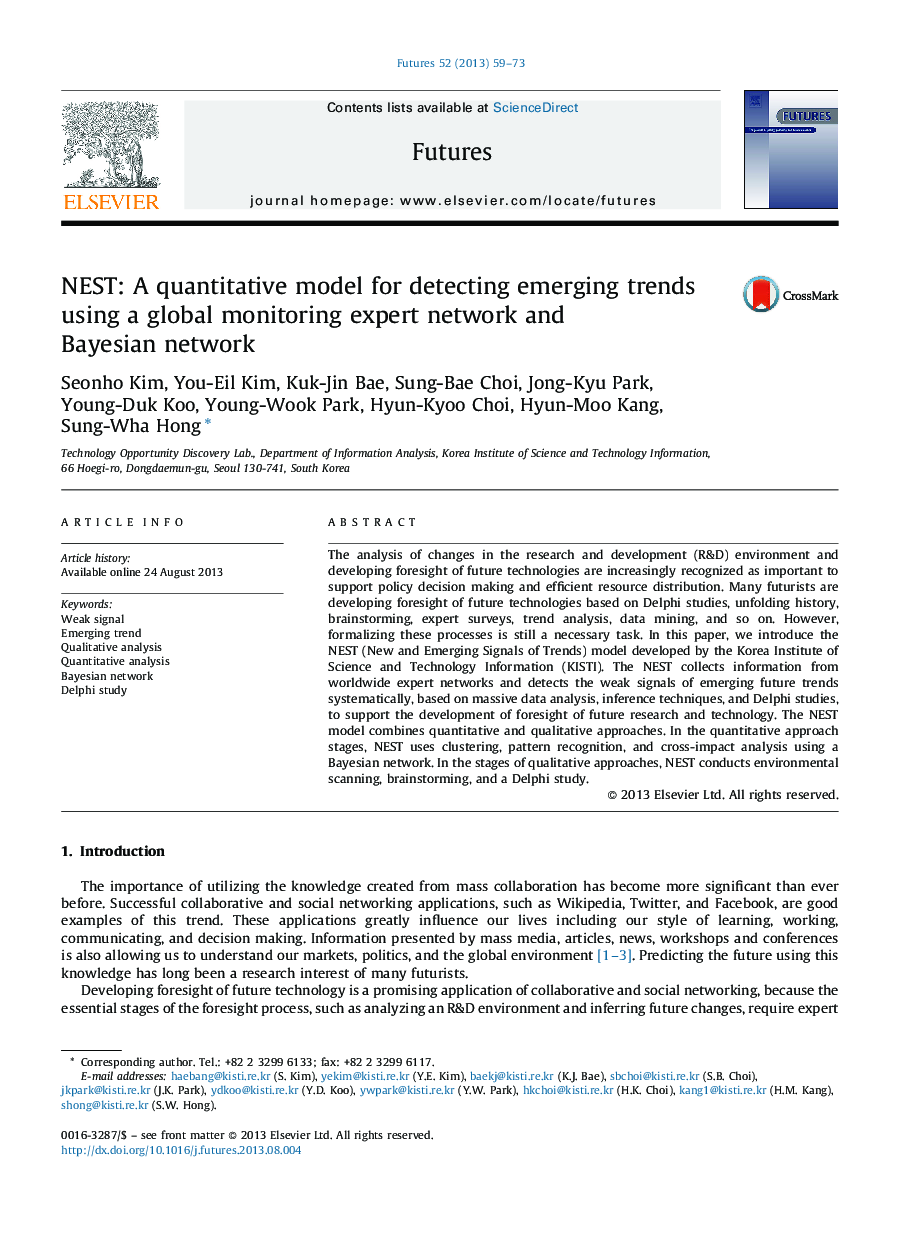| Article ID | Journal | Published Year | Pages | File Type |
|---|---|---|---|---|
| 1015560 | Futures | 2013 | 15 Pages |
•We introduce a government-funded program of Korea to support the development of foresight of future science and technology.•We introduce our environmental scanning process, which have been doing for 16 years.•We explain our systematic foresight model, which combines qualitative and quantitative methods.•Our model is based on analyzing massive data using information technology and inferring through Bayesian network.•Qualitative methods are used as the assessments of the results of quantitative methods.
The analysis of changes in the research and development (R&D) environment and developing foresight of future technologies are increasingly recognized as important to support policy decision making and efficient resource distribution. Many futurists are developing foresight of future technologies based on Delphi studies, unfolding history, brainstorming, expert surveys, trend analysis, data mining, and so on. However, formalizing these processes is still a necessary task. In this paper, we introduce the NEST (New and Emerging Signals of Trends) model developed by the Korea Institute of Science and Technology Information (KISTI). The NEST collects information from worldwide expert networks and detects the weak signals of emerging future trends systematically, based on massive data analysis, inference techniques, and Delphi studies, to support the development of foresight of future research and technology. The NEST model combines quantitative and qualitative approaches. In the quantitative approach stages, NEST uses clustering, pattern recognition, and cross-impact analysis using a Bayesian network. In the stages of qualitative approaches, NEST conducts environmental scanning, brainstorming, and a Delphi study.
